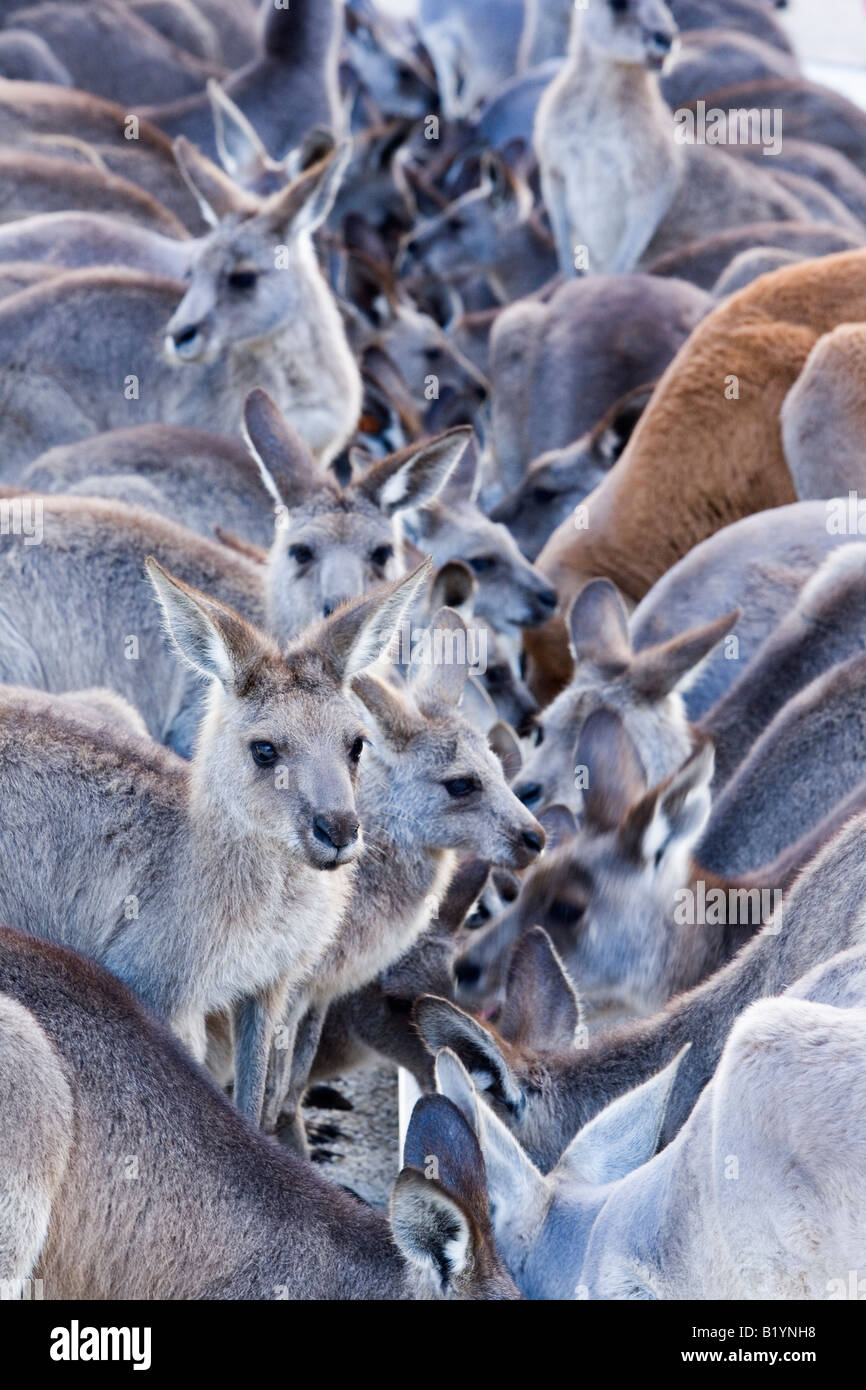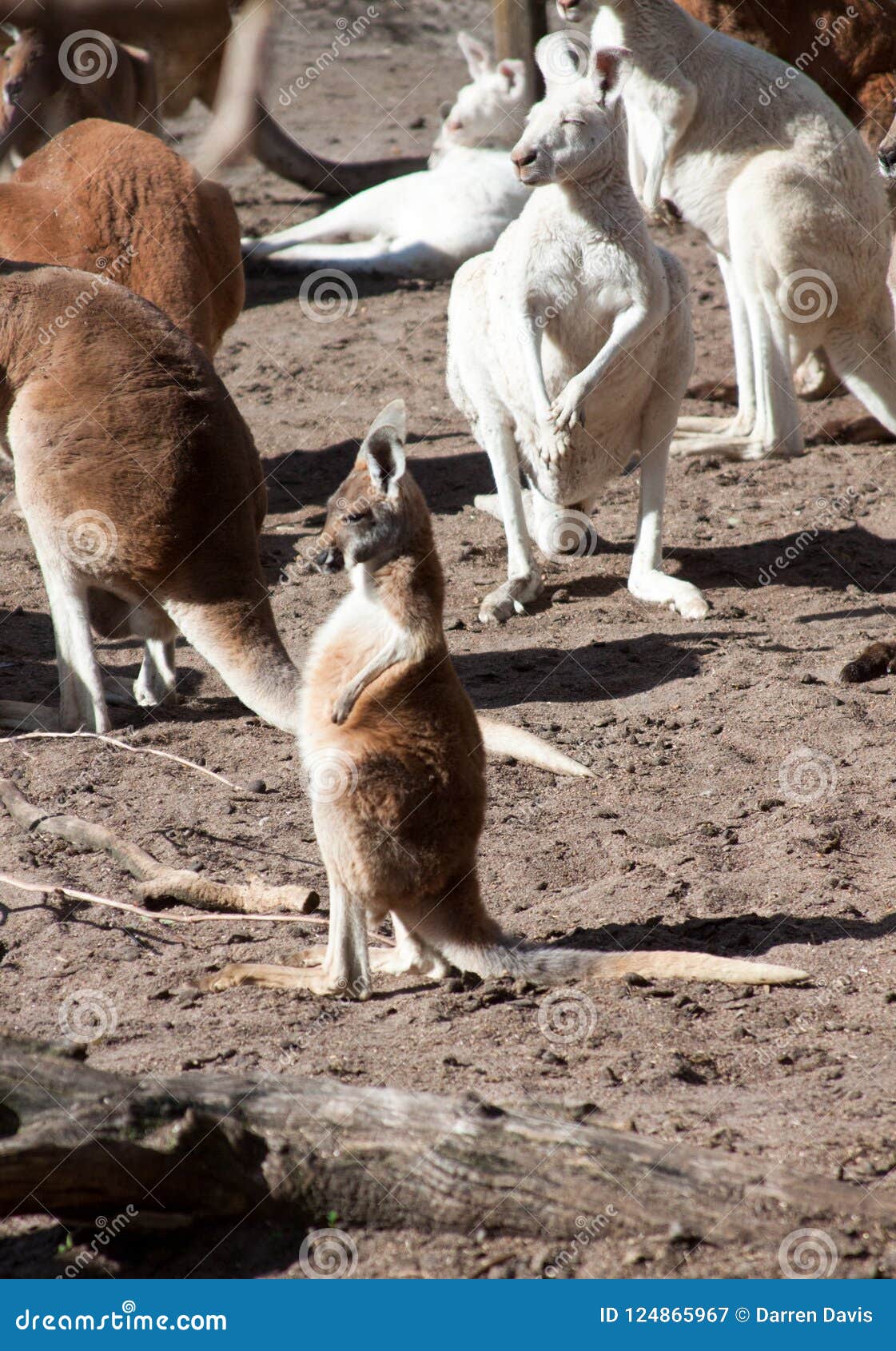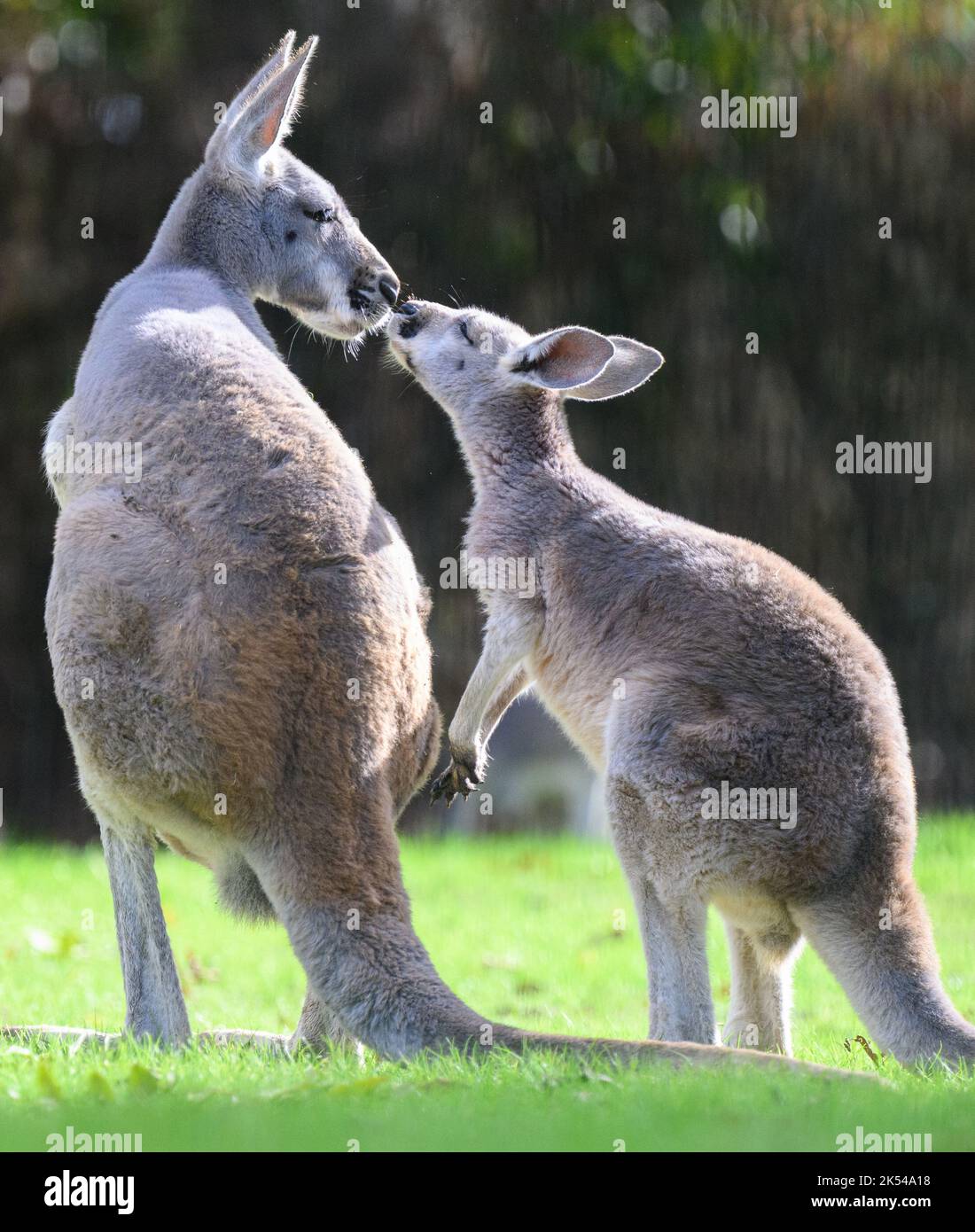Have you ever wondered why kangaroos are so fascinating? These marsupials, native to Australia, possess unique characteristics that set them apart from other animals. With their powerful hind legs and tails, they can leap vast distances effortlessly. Moreover, their social structure is equally intriguing. Kangaroos often live in large groups, known as mobs, which can vary in size depending on environmental conditions. This aspect of their behavior makes them one of the most captivating creatures in the animal kingdom.
The term mob refers to a group of kangaroos, though it may also be referred to as a troop or court. Regardless of the terminology used, these aggregations play a crucial role in the survival of kangaroo populations. Within these groups, individuals benefit from shared resources, protection against predators, and enhanced opportunities for reproduction. Female kangaroos, called does or flyers, and male kangaroos, known as bucks or boomers, form complex social hierarchies within these mobs. Understanding this intricate social structure sheds light on the remarkable adaptability of kangaroos to their environment.
| Bio Data | Details |
|---|---|
| Name | Kangaroo |
| Scientific Name | Macropus |
| Habitat | Australia |
| Diet | Herbivorous |
| Group Name | Mob, Troop, or Court |
| Conservation Status | Least Concern (varies by species) |
| More Information | PBS Nature Fact Sheet |
Despite their widespread distribution across Australia, kangaroos face numerous challenges in the modern world. Habitat destruction due to urbanization and agricultural expansion poses significant threats to their survival. Additionally, climate change exacerbates these issues by altering ecosystems and reducing available resources. Conservation efforts aim to mitigate these pressures while promoting sustainable coexistence between humans and wildlife. Public awareness campaigns highlight the importance of preserving natural habitats for kangaroos and other native species.
Studying kangaroo behavior provides valuable insights into their ecology and evolution. Researchers have discovered that kangaroos exhibit sophisticated communication patterns within their mobs. Vocalizations, body language, and scent marking all contribute to maintaining social cohesion among group members. Furthermore, kangaroos possess specialized adaptations such as chambered stomachs for efficient digestion and strong tails for balance during locomotion. These traits enable them to thrive in diverse environments ranging from arid deserts to lush grasslands.
In recent years, debates surrounding lethal control measures for kangaroo populations have intensified. Wildlife management strategies often involve culling programs aimed at regulating numbers when overpopulation becomes an issue. However, public opinion remains divided regarding the ethical implications of such actions. Proponents argue that controlled culling prevents ecological imbalances caused by excessive grazing pressure on vegetation. On the other hand, opponents emphasize humane alternatives like fertility control methods or relocation initiatives.
Education plays a pivotal role in shaping attitudes towards kangaroo conservation. Surveys conducted among participants revealed varying levels of knowledge about these animals. Questions addressing basic facts about kangaroos demonstrated gaps in understanding among certain demographics. Addressing these deficiencies through targeted outreach programs could foster greater appreciation for kangaroos and encourage support for conservation endeavors. By bridging the gap between scientific research and public perception, we can work towards ensuring a brighter future for these iconic marsupials.
Zoos around the world contribute significantly to kangaroo preservation efforts. Institutions like the Cincinnati Zoo & Botanical Garden and Staten Island Zoo provide safe havens where kangaroos can be observed up close by visitors. Educational exhibits offer valuable information about kangaroo biology, behavior, and conservation status. At the Staten Island Zoo, two female kangaroos named Sydney and Nugget serve as ambassadors for their species, captivating audiences with their playful antics. Such initiatives not only entertain but also inspire action towards protecting endangered wildlife.
As global citizens, it is our responsibility to ensure the long-term survival of kangaroos and countless other species facing similar challenges. Collaborative efforts involving governments, scientists, educators, and communities are essential for achieving this goal. Embracing innovative technologies and embracing traditional ecological knowledge will pave the way for effective conservation solutions. Together, we can create harmonious ecosystems where both humans and wildlife flourish side by side.
Understanding the nuances of kangaroo social structures enriches our comprehension of these magnificent creatures. Their ability to form cohesive groups enhances their chances of survival amidst ever-changing landscapes. From hopping across vast terrains to nurturing young ones in protective pouches, every aspect of kangaroo life exemplifies resilience and adaptability. As stewards of the planet, let us commit ourselves to safeguarding the legacy of kangaroos for generations to come.
Future research should focus on expanding our understanding of kangaroo ecology and improving management practices. Long-term monitoring projects will help track population trends and assess the effectiveness of current interventions. Engaging local communities in data collection efforts fosters ownership and accountability in conservation initiatives. Furthermore, integrating indigenous perspectives into decision-making processes ensures culturally appropriate approaches to wildlife management. By prioritizing collaboration and inclusivity, we can develop comprehensive strategies that address the multifaceted challenges facing kangaroo populations today.
In conclusion, kangaroos represent a vital component of Australia's rich biodiversity. Their distinctive features and behaviors captivate audiences worldwide, inspiring admiration and curiosity alike. Through dedicated conservation efforts and increased public awareness, we can ensure that these remarkable animals continue to thrive in their natural habitats. Let us honor their place in the ecosystem by championing policies and practices that promote sustainability and respect for all forms of life.



